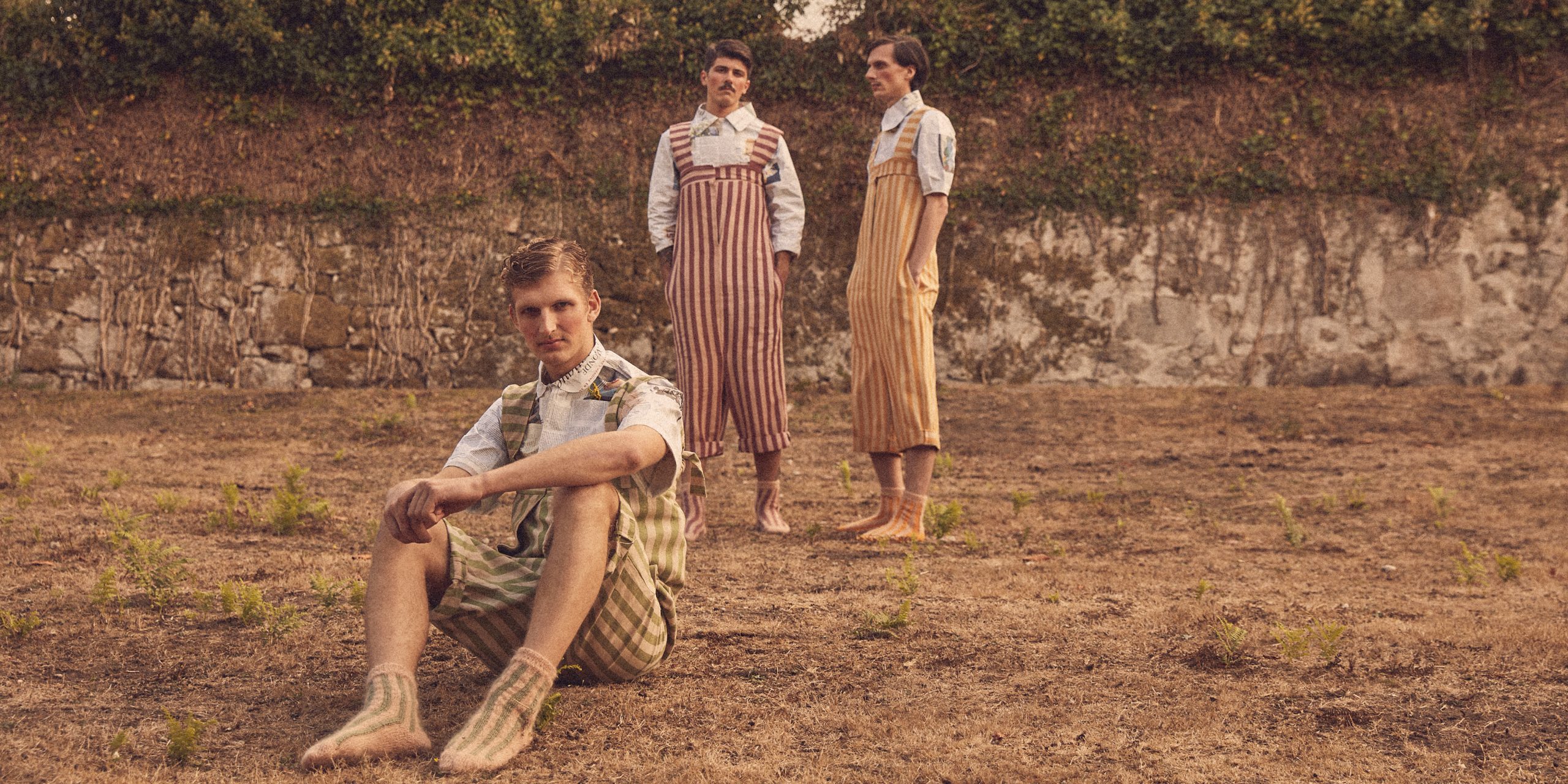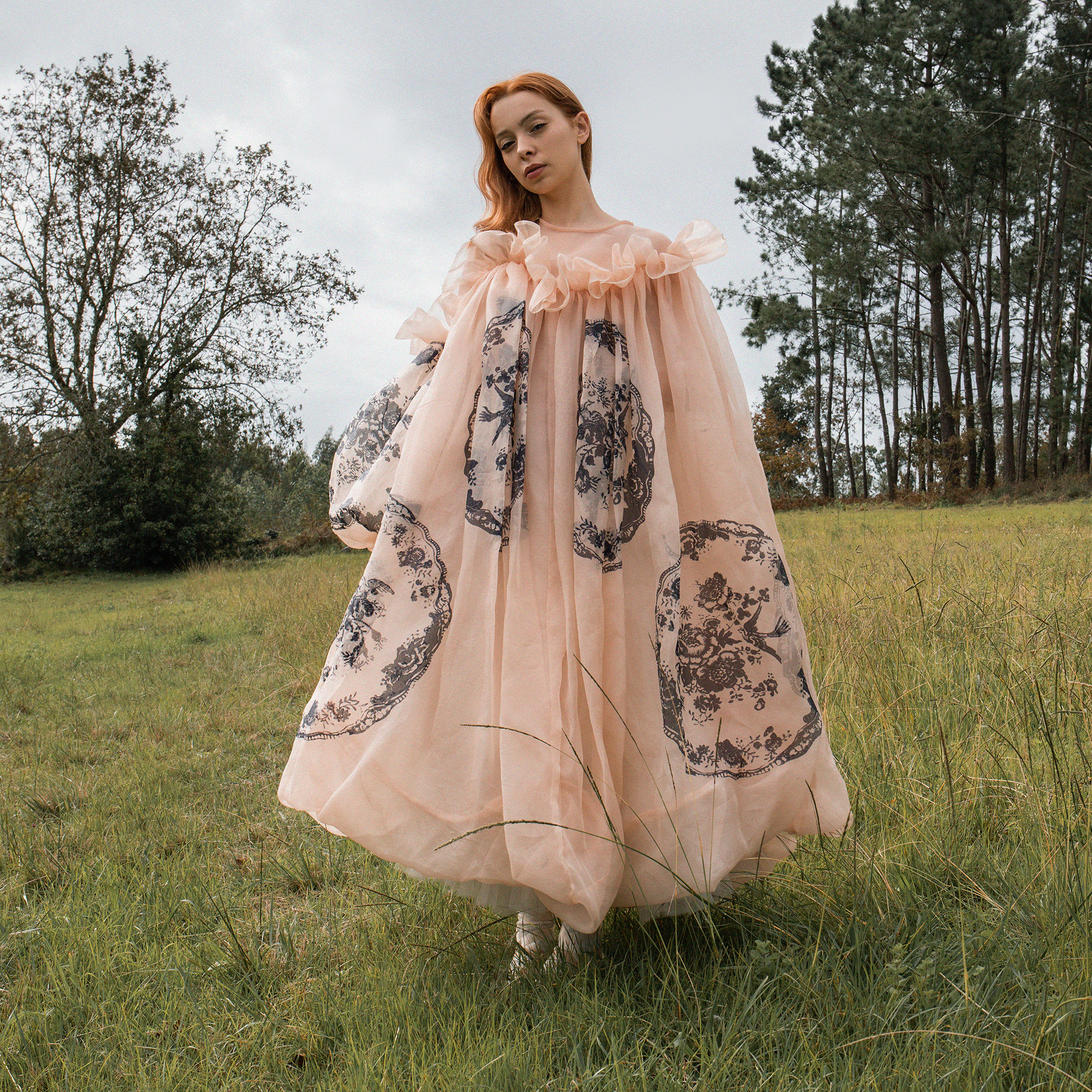Master’s Degree in Design


In the Master’s Degree in Fashion Design and Creative Management at the University of Vigo we offer specialised training. We develop a programme focused on the skills and tools needed by contemporary fashion designers. Creative, multifaceted and versatile professionals who are open, resourceful and able to understand social, cultural and economic changes.
Basic data
Title
Master’s Degree in Fashion Design and Creative Management by the University of Vigo
Duration
2 academic years
Credits
120 ECTS
Places of new access
21
Place
Faculty of Design
Pontevedra Campus. CREA S2i Campus
Organisation of teaching
The training is organised according to a mixed structure of compulsory and optional subjects belonging to 4 teaching modules, distributed over the 4 four semesters. The total number of credits of the master’s degree is 120. This total number includes compulsory subjects (102 credits) and a master’s thesis (18 credits).
Introduction
The importance of design in the context of today’s culture and society is indisputable. Specific training in design is not only a demand of society, but also a fundamental agent for economic development in Galicia, where the fashion sector is a priority industry.
The Master’s Degree in Design and Creative Management in Fashion has an up-to-date programme that is connected to the reality of the professional world. It is the logical evolution arising from a wide experience in fashion training for more than ten years at the University of Vigo.
Within the master’s degree, a prestigious programme has been developed, placing it at the forefront of fashion design training centres in Spain. Our graduates are regularly present on the main catwalks of the country and are part of the creative teams of an extensive list of fashion brands: Inditex, Purificación García, CH, Bimba y Lola, Adolfo Domínguez, among many others. The Master’s Degree in Fashion Design and Creative Direction represents a step forward in specialised training, with well-defined objectives and challenges, and with the human and material resources necessary to carry them out.
Objectives
We train fashion specialists with a broad professional projection and in-depth knowledge of the processes and tools for research, analysis and trend prediction. This is the master’s degree for you if you want to be a creative person capable of starting your own brand or joining design teams with a versatile profile in fields such as creative direction, styling and fashion design, or graphic design for fashion.
Challenges
We are committed to creativity as the main energy. Agents that generate innovation with the ability to lead and coordinate teams. The ‘Master’s Degree in Fashion Design and Creative Management’ aims at the comprehensive development of skills that enable students to exercise professional activity in design, styling and/or creative management in fashion without leaving behind the development of an academic specialisation in this field of cultural production.
To this end, we have a well-structured programme with a strong practical focus, based on a long history and relationship with dozens of companies with which we have been developing educational cooperation programmes for more than a decade.

Study plan
First year
FIRST SEMESTER
Aesthetics and history of fashion
Laboratory of materials
Fashion design projects I
Fashion illustration
SECOND SEMESTER
Trends Lab
Fashion creative direction
Design and digital environment
Fashion design projects II
Fashion photography
Second year
FIRST SEMESTRE
Research and creative processes
Graphic design for fashion
Design management (Optional)
Research lines (Optional)
Guest researcher workshop (Optional)
Fashion: Professional Environment (Optional)
Case studies (Optional)
Models and auxiliary disciplines (Optional)
SECOND SEMESTER
External internships
Portfolio design
Master's Final Project


Entry profile
Candidates who are in possession of an official Spanish university degree or another degree issued by a higher education institution of the European Higher Education Area (EHEA) that authorises access to Master’s studies in the country of issue of the degree may be admitted to the Master’s degree.
Graduates from educational systems outside the EHEA may also be admitted without the need for official recognition of their degrees, subject to verification by the University that they accredit a level of education equivalent to the corresponding official Spanish university degrees and that the country of issue of the degree authorises access to postgraduate studies.
Access by this route will not imply, in any case, the homologation of the previous degree held by the interested party, nor its recognition for purposes other than that of studying for the Master’s degree.
Source
The master’s degree is aimed at university graduates (graduates and/or undergraduates) from the field of Humanities (Fine Arts, History of Art, etc.) or other related areas of knowledge, such as Scientific-Technical or Legal-Social (Architecture, Communication, Advertising, etc.).
University graduates in Fine Arts or Design, as well as in the two aforementioned areas of knowledge, will have priority over other applicants. However, the Academic Committee will consider applications from graduates in other fields who wish to enter the world of contemporary design in its theoretical and practical aspects or in the field of research.


Career opportunities
The profiles of graduates of the Master’s Degree in Fashion Design and Creative Management in relation to the professional profiles present in the current and future labour market are listed below:
Designers of women’s, men’s and children’s garments.
Pattern designers.
Designers of textile products, accessories, etc.
Stylists.
Creative Directors.
Art Directors.
Print developers.
Trend analysts.
Visual merchandisers.
Graphic designers.
Fashion graphic designers.
Product managers.
Fashion communication.
Designers for e-commerce.
Creators of digital fashion content.
Fashion research.
Fashion critic.
These professional profiles cover diverse areas within the fashion industry and reflect the employment and career development opportunities available to graduates of the master’s degree.
Pre-registration and enrolment
Type of training: Face-to-face
Number of places: 21
The application must be formalised on the website of the University of Vigo → self-enrolment and within the official dates established.
– Signed receipt of the application.
– Title and academic transcript of the degree that gives access (except students of the University of Vigo).
– Artistic and/or professional CV.
– Creative dossier of work or visual presentation of works and/or proposals related to some area of fashion: design, artistic creation, graphics and communication, critical texts, etc.
– Motivation letter.
Criteria for the assessment of merits
In the event that demand exceeds the number of places offered, the following merit assessment criteria will be established:
Title and academic record of the qualification presented for admission. The suitability of the degree and the overall average qualification will be assessed (50 %).
Creative dossier. Artistic and visual interest, creative capacity and relationship with the field of fashion will be assessed (20 %).
Artistic and/or professional CV. The career path presented will be assessed according to its suitability to the degree to which access is sought. (20 %)
Knowledge of foreign languages duly certified: English, Portuguese, etc. (10 %).
The Master’s Academic Committee will be responsible for the assessment of merits and the selection of students, after verification by the administrative units that the applications meet the access and admission requirements.
Welcome and orientation
After registration, new students will be invited to a welcome and orientation day. This day will consist of a presentation of the Master’s Degree by the Degree Coordinator and other members of the Academic Committee and teaching staff.
Students will be accompanied on a tour of the facilities, as well as being given an informative talk on the structure and operation of the Master’s, the services and infrastructures, the timetables and academic organisation, the presentation of the teaching staff and other organisational and logistical matters of interest.
Online Enrolment
→ Access to the pre-enrolment page
→ Access to the self-enrolment page
→ Consult the updated annual call for applications
→ Consult the list of admitted students


